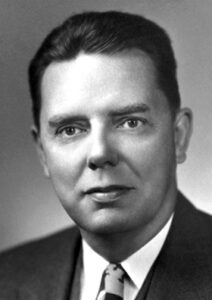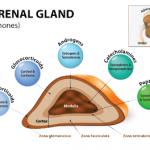Dr. Hench described antecedent work for the groundbreaking 1949 paper:1
Even though the pathologic anatomy of rheumatoid arthritis is more or less irreversible, the pathologic physiology of the disease is potentially reversible, sometimes dramatically so. Within every rheumatoid patient corrective forces lie dormant, awaiting proper stimulation. Therefore, the disease is not necessarily a relentless condition for which no satisfactory method of control should be expected. The inherent reversibility of rheumatoid arthritis is activated more effectively by the intercurrence of jaundice or pregnancy than by any other condition or agent thus far known. Regardless of the supposed validity of the microbic theory, rheumatoid arthritis can be profoundly influenced by phenomena which are primarily biochemical.

Dr. Hench
In terms of underlying physiology, Dr. Bucala points out that pregnancy is, in fact, a high-steroid state, and estrogens themselves have some anti-inflammatory effects. Liver disease may also temporarily increase steroid levels through impaired metabolism of endogenous steroids and/or their increased production, as can happen in response to noxious stimuli.
Although the origins of his next insight aren’t completely clear, Dr. Hench began to suspect that substance X might be produced by the adrenal gland. Christopher M. Burns, MD, associate professor of medicine at the Geisel School of Medicine at Dartmouth, Lebanon, N.H., points out that they knew at the time that adrenally deficient patients with Addison’s disease had profound fatigue, similar to RA patients, and it was also known that surgery induced some sort of protective adrenal response.
“That was kind of where they started to think that it was an adrenal hormone that made rheumatoid arthritis better in these circumstances,” says Dr. Burns.
Zoning in on Compound E
In 1935, Dr. Hench began working with Edward C. Kendall, PhD, a professor of physiological chemistry at the Mayo Clinic. Dr. Kendall was already actively working to isolate physiologically active adrenal compounds. This was a laborious process that required thousands of pounds of animal adrenal glands to produce tiny quantities of product. Eventually, Drs. Hench and Kendall focused on the adrenal hormone termed “compound E” as potentially being the mysterious “substance X” that improved RA in multiple clinical situations.3
With the advent of World War II, the pharmaceutical industry became very interested in the production of an adrenal extract that might prove protective against stress. In fact, the U.S. government’s National Research Council made isolating such a compound their number one priority, due to its potential military implications.

